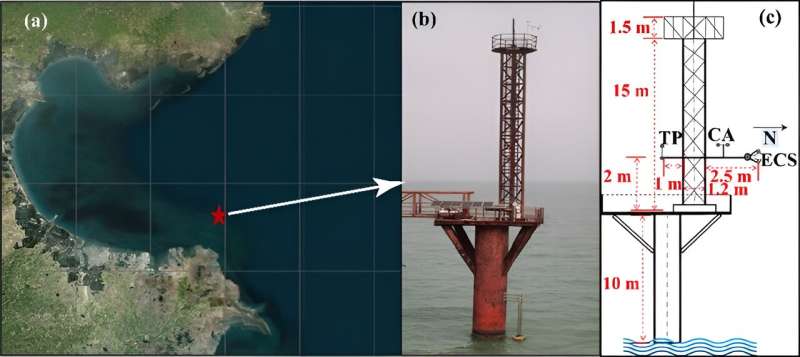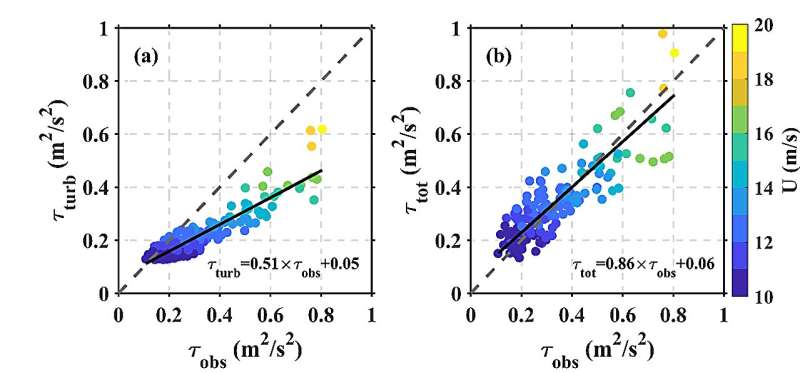This article has been reviewed according to Science X's editorial process and policies. Editors have highlighted the following attributes while ensuring the content's credibility:
fact-checked
peer-reviewed publication
trusted source
proofread
Turbulence flux observations at tower-based platform reveal modulation mechanism of wind waves on surface wind

Recently, a study by Associate Prof. Sheng Chen and Prof. Fangli Qiao from the First Institute of Oceanography, Ministry of Natural Resources was published in Science China Earth Sciences. The observational data from a coastal tower-based platform are used to reveal the modulation mechanism of wind waves on wind stress, and it was found that wind wave can increase the wind stress.
As the key role of wind stress in air-sea interaction, the impact of ocean surface waves on wind stress at the air-sea interface has received increasing attention. According to different generation mechanisms, surface waves can be divided into wind waves and swells, and there are distinct differences in their modulation effects on wind stress.
The research team used observational data from a nearshore tower-based platform in the South China Sea to reveal the effect of swells on wind stress, and found that swells can reduce the wind stress. The swell-induced stress can correct the positive deviation between traditional wind-induced turbulent stress and observation.
The related results were published in October 2020 in Geophysical Research Letters. However, due to the lack of synchronous observation data on wind waves and momentum fluxes at moderate to high wind speeds, there is insufficient understanding on the modulation effect of pure wind waves on wind stress.
Therefore, with the support of Ocean Oil Production Plant, Shengli Oilfield Branch, Sinopec, a high-frequency turbulence observation system was designed and mounted on the tower-based platform in the southern Bohai Sea, and synchronously observed the wind waves and fluxes under the influence of cold air. Further analysis showed that the wind and wave states caused by winds from the northwest and northeast are different, resulting in different wind stress under the influence of cold air.

Traditionally calculated wind-induced turbulent stress deviates from the observed values, and the degree of deviation depends on wind speed and wave state, with a greater deviation caused by strong winds and waves. The wind wave-induced stress can correct the negative deviation between traditional wind-induced turbulent stress and the observed values.
Numerical ocean and climate models need to consider the different effects of swells and wind waves on wind stress for better simulation and prediction. The Wave Boundary Layer Model (WBLM) can show the wave effects in different states in the form of wave-induced stress.
More information: Sheng Chen et al, Observation and analysis of the influence of wind waves on air-sea momentum fluxes, Science China Earth Sciences (2023). DOI: 10.1007/s11430-022-1130-8
Journal information: Geophysical Research Letters , Science China Earth Sciences
Provided by Science China Press



















